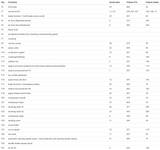From 1964, British Rail (BR) purchased a total of 56 diesel-hydraulic Class 14s to transport light trains between marshalling yards and industrial areas. The Paxman six-cylinder engine, which was set to produce 650 hp at 1500 rpm, transmitted its power to the three axles via a jackshaft and coupling rods. The maximum speed limit of 40 km/h was beneficial for traction, but was hardly sufficient for long-distance travel. For this reason, the BR began selling its Class 14s to industrial companies in the late 1960s, which were keen to snap up the young, reliable locomotives. Many of the three-coupled locomotives, known as Teddy Bears, had a third life on private and heritage railways, including in work train service, which is why only 32 examples have been scrapped so far.
Different starting processes can be selected with F1: 1x press button = warm start / press button 2x = false start / press button 3x = cold start
F2 slows down the locomotive slowly.
For F3 and F4 different air horns are played depending on the direction.
F5 enables the heavy load mode: The diesel notch is always one up compared with normal operation. If you want to jump two notches, simply set CV 104 to 150 (instead of 130).
F14, F18 and CV 167 value 0 or 1, can switch between a "normal announcement" or an announcement "with gong".
F9 can increase the speed of the spirax valve by double-clicking it. The speed levels are slow, medium and fast.
17 will bring the locomotive to full stop.
F21 and CV 166 = value 0 or 1, can switch between a "normal" or a "squeaking" wiper.
F28 and CV 164 = Value 0, 1, 2 or 3, can switch between different rail joints (three coupler can be activated with CV 165 = value 1).
F29 and CV 169 = value 0 or 1, can switch between the "Automatic Warning System (AWS)" or the "Train Protection and Warning System (TPWS)".




